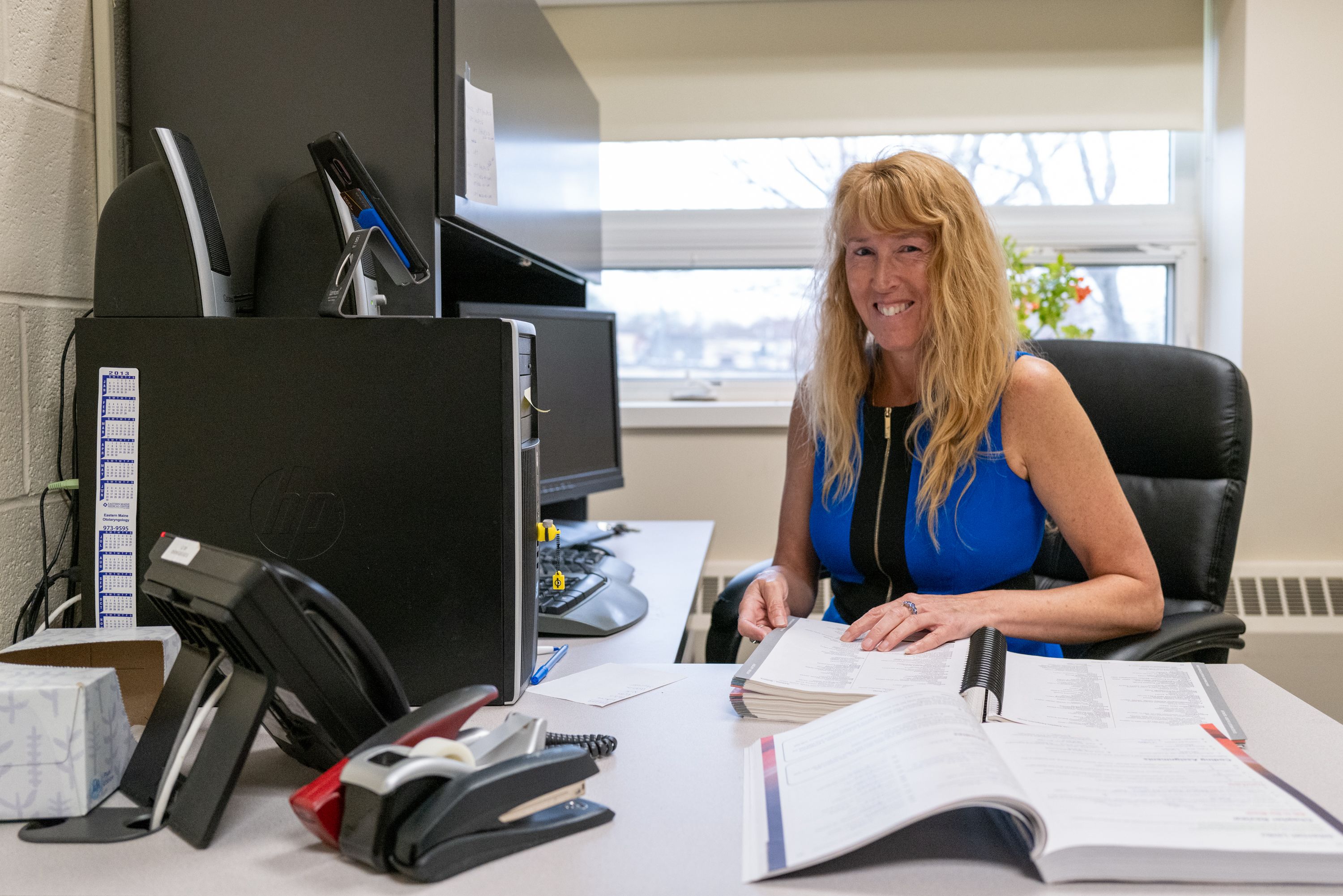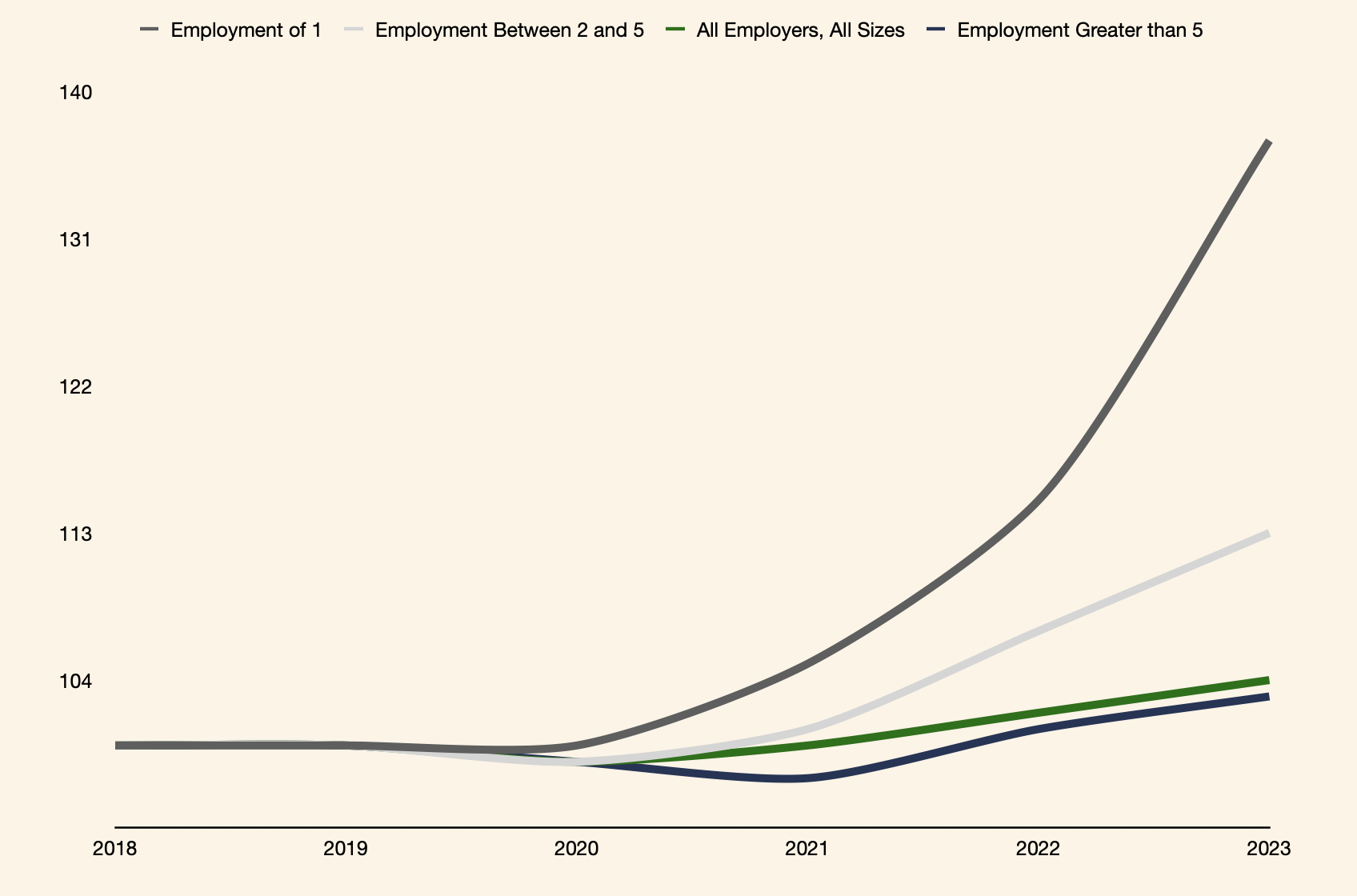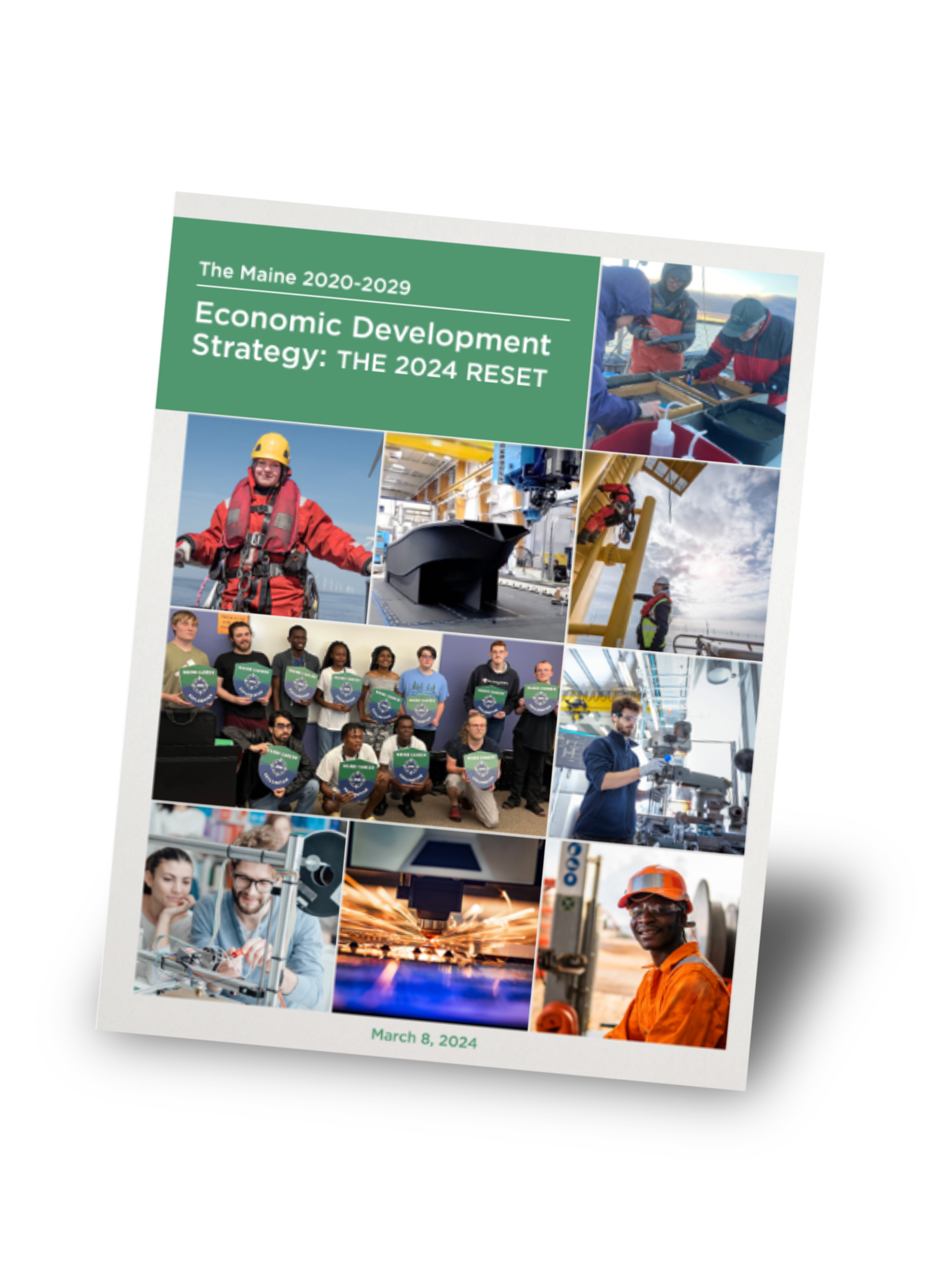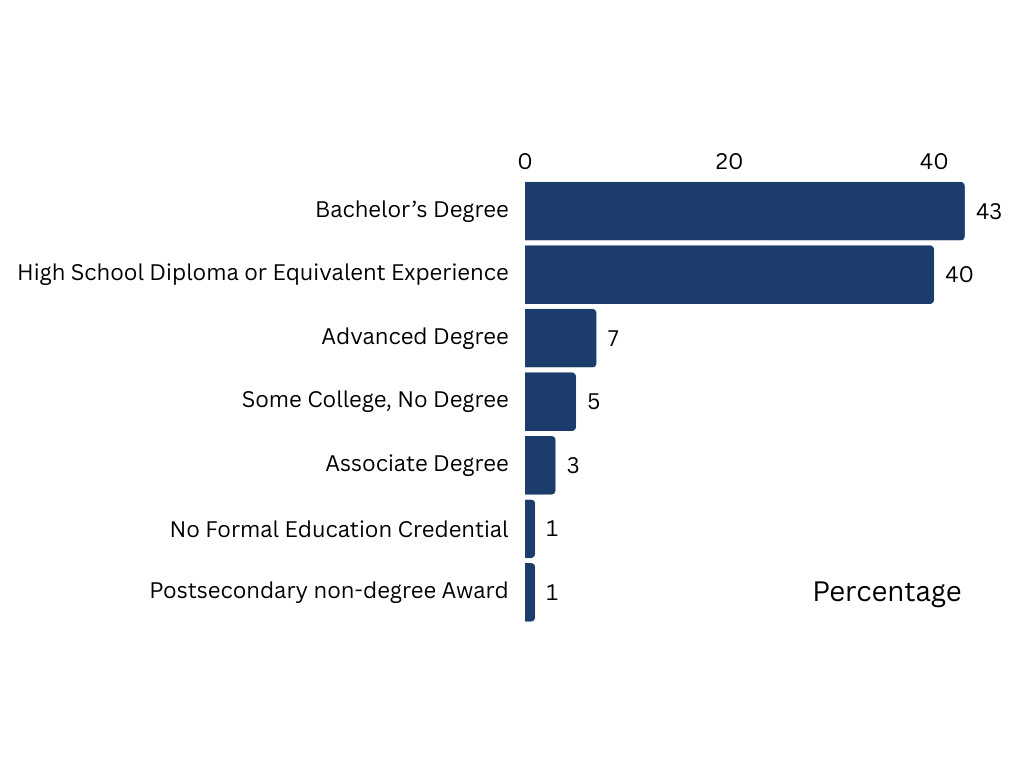How a Collaborative Model Among Its Community Colleges Is Propelling Maine’s Work Force

“It’s not often that Maine has a chance to lead — we often take some great ideas that we see around the country, modify them, and then deliver them in Maine,” said John Fitzsimmons, when sharing the impetus for the Maine Community College System’s (MCCS) grant funding from Ascendium to help establish the college system’s Remote Work for ME initiative. “But, in this area, we’re a little bit ahead of everybody else. Statewide [we’re] helping certain populations connect to the future.” Provided through the Harold Alfond Center for the Advancement of Maine’s Workforce, the community college system’s hub for short-term workforce training, the initiative is a set of occupational training programs designed to prepare Maine’s largely rural workforce for the digital economy.

Fitzsimmons is president emeritus of the college system and is currently serving as the president of The Foundation for Maine’s Community Colleges — the organization that works to secure funding for the state’s seven community colleges. He reflected on his personal history, shared the motivations behind creating programming to support remote learning and working opportunities for Maine’s rural and coastal communities, and discussed the state’s collaborative and unifying culture that’s allowing for the continued successes of the community college system’s efforts at expanding a remote workforce.
Hear John's Story:
Throughout the state, there’s a pervasive ethos of unity: What’s good for some is good for all. For example, while the bulk of economic development may take place within Portland, Maine’s most populous city, there's a belief that such developments will benefit the rest of the state. According to Fitzsimmons, roughly three-quarters of the state’s economic activity takes place in the southern part of the state. Looking at non-farm employment in the Portland area alone, nearly one-third of Maine’s overall employed workforce can be traced to the city.
“We’re so dependent on each other to get the work done. If you’re in northern Maine, you cheer for southern Maine…there is an understanding that if one does well, then the other will do well.”
John Fitzsimmons
President, The Foundation for Maine’s Community Colleges
“[Southern Maine] is where most of the population is — where most of the industry is,” said Sarah Cox, chief human resources officer at L.L. Bean, one of the top employers in Maine. “But we have people who live on islands off the coast or way up north [and] we want to capitalize on their talents. And, through remote working, we’re able to really make that connection so that they can be part of our work communities just like anybody living in any other part of the state.”
Cox currently serves on the Maine Advisory Council on Remote Work, a coalition of the state’s key employers that share resources with other employers on how to recruit, retain, and develop a remote and hybrid workforce. The council works closely with the community college system and other state businesses to inform modifications to the Remote Work for ME program so that it aligns with changing employer needs. The council has become an important asset for small- and medium-sized employers that don’t have the internal resources — such as employee training or human resource departments — that are available to larger companies, like L.L. Bean.

“Where do we think that the future jobs are going to be? And how can our community colleges or university systems really develop programming that is relevant so that they produce fantastic employees who can stay and work in Maine?”
Sarah Cox
Chief human resources officer, L.L. Bean

“[Southern Maine] is where most of the population is — where most of the industry is,” said Sarah Cox, chief human resources officer at L.L. Bean, one of the top employers in Maine. “But we have people who live on islands off the coast or way up north [and] we want to capitalize on their talents. And, through remote working, we’re able to really make that connection so that they can be part of our work communities just like anybody living in any other part of the state.”
Cox currently serves on the Maine Advisory Council on Remote Work, a coalition of the state’s key employers that share resources with other employers on how to recruit, retain, and develop a remote and hybrid workforce. The council works closely with the community college system and other state businesses to inform modifications to the Remote Work for ME program so that it aligns with changing employer needs. The council has become an important asset for small- and medium-sized employers that don’t have the internal resources — such as employee training or human resource departments — that are available to larger companies, like L.L. Bean.

“Where do we think that the future jobs are going to be? And how can our community colleges or university systems really develop programming that is relevant so that they produce fantastic employees who can stay and work in Maine?”
Sarah Cox
Chief human resources officer, L.L. Bean

Between 2018 and 2023, these smaller employers comprised the bulk of job growth within the state. The state also saw the number of remote positions increase significantly within this time period — showing a more than 20-percent increase in worksites relative to a largely consistent number of available jobs starting in 2020, with a foreseeable increase in following years. For these smaller companies in Maine, the resources provided through the Remote Work for ME initiative on how to train and maintain a remote workforce (and get access to that remote talent), has become crucial to securing their ongoing success.
Index of Maine Jobs by Worksite Size
Remote job growth has seen an overall increase across all company sizes within Maine, but companies with less than 5 employees saw the greatest growth.
A job index value of 100 represents the employment level in March, 2018. Each unit can be interpreted as a percent change compared to the 2018 level. Source: Maine Department of Labor, Quarterly Census of Employment and Wages.

The future of the state’s economy will rely heavily on its ability to develop talent internally as well as to attract talent into the state, and the state government has leaned heavily on remote work as a core pathway to get there.
The initiative is just one of numerous efforts that represent a partnership between public, private, nonprofit, and education sectors within the state — all part of a 10-year strategic economic development plan led by Maine governor, Janet Mills. Just in April of this year, Governor Mills announced grants totaling $500,000 to 11 businesses and organizations throughout the state to expand co-working spaces. “During the pandemic, thousands of people decided to move to Maine and bring their work with them,” according to the governor. “These grants from my Maine Jobs & Recovery Plan will create more workspace options for anyone who wants to make Maine their office and their home.”
The efforts to build a more robust Maine workforce with this focus on remote working predates the pandemic. Back in early-2020, for example, in an effort to attract more outside tech talent (and companies) into and to increase economic activity within the state, Northeastern University created the Roux Institute in Portland. The graduate campus and research center was established with a $100 million gift from tech entrepreneur and investor, David Roux, as well as a matching donation from the Harold Alfond Foundation.
“In this country, ambition and ability are broadly distributed, but opportunity is not,” according to Roux. “This new institute will address that stark disparity. It will be an opportunity machine for Maine’s people and businesses at precisely the right time.” A native of Maine himself, Roux’s hope for the institute is to support fellow Mainers in catching up to the skillsets of the digital era and to encourage businesses to relocate their operations to the state.
“What I think about the partnerships that are developed in Maine is that even though we're a geographically large state, in terms of the people here, it's a relatively small state. And we've really cultivated a culture in Maine,” said Cox. Throughout every organization, public and private, the same sentiments around supporting fellow Mainers is what seems to drive the motivations behind educational and workforce development. Within the state, individualism takes a back seat to collective action: The people of Maine love their state, and they want to help each other succeed so that the state succeeds.

“We have subject matter experts and industry partners that we have conversations with to understand what's working [and] what's not. Where do they see their business going over the next five to seven years? What are some of the trends that we need to be mindful of? And then we're able to craft and build programs to deliver the training that provides the workforce to fill those positions.”
Chris Winstead
Deputy executive director of workforce training, Maine Community College System

Foundation of Workforce Development
2019
Governor Janet Mills releases Maine’s 10-year economic development strategy, prioritizing talent and innovation development.
Impact of the Pandemic
Early-2020
The Covid pandemic accelerates the shift to remote work in Maine.
Educational Collaborations and Workforce Resilience
Mid-2020
Collaboration between Maine’s Community Colleges, the state government, and local industry lead to development of plans for remote workforce upskilling.
Introduction of Remote Work Initiatives
2021
Remote Work for ME initiative launched to equip Mainers with remote work skills.
Present and Future Growth
2023 and beyond
Maine’s workforce transformation continues, driving economic growth and resilience.
“When you look at a state, like Maine, we have a lot of folks who are resilient; we have a lot of folks who have dealt with a shift in the industry that they’ve worked in,” said Chris Winstead, deputy executive director of workforce training for the Maine Community College System. “Being able to provide them access to critical training that allows them to stay where they are in their communities and have new earning opportunities — that’s why I do what I do.”
The community college system in Maine works intimately with local industry to ensure that students are offered the right programming. During the pandemic, the state government found that 43 percent of jobs done by employees within the state required a bachelor’s degree. But it also found that a similarly-sized 40 percent of jobs only required a high school diploma or equivalent experience. The caveat? Employers wanted workers who were equipped with the skills to work in a remote environment — and that’s where MCCS saw the opportunity to offer classes and certifications focused on remote working, said Winstead.
Suited to Remote Work by Education Needed for Entry
Source: Maine Department of Labor, U.S. Bureau of Labor Statistics Occupational Projections
Source: Maine Department of Labor, U.S. Bureau of Labor Statistics Occupational Projections
Hear from Chris:
At Eastern Maine Community College, the medical office technology program created curricula specifically responding to the people within the state looking for remote opportunities and to employers in the healthcare industry looking to fill roles that shifted from being on-site to remote. “We have a certificate program that students can complete in one year, and we’re also doing shorter-term training so that students can get right out into the workplace,” said Kim Campbell, the faculty member who leads the program.
For Campbell, who herself is a lifelong resident of Maine, the impact of being able to provide remote learning for remote professions is not lost on her. She touched on the access it offers to her students, many of whom reside in rural portions of the state and are trying to balance their lives with trying to learn new skills. “It’s normal people, every day, that are getting their credentials and going out into the workforce and changing their lives and doing something that they enjoy doing. And many of them are from home, which I really, really like.”

"The students have so much more interaction with each other in an online environment that they wouldn’t have had if they were in a classroom and they were just sitting next to someone. So, they get to hear these stories about each other’s lives — what other people have gone through. It just humbles you when you hear what some people have had to overcome to be where they are today, back in the classroom."
Kim Campbell
Instructor of the medical technology program, Eastern Maine Community College

At Eastern Maine Community College, the medical office technology program created curricula specifically responding to the people within the state looking for remote opportunities and to employers in the healthcare industry looking to fill roles that shifted from being on-site to remote. “We have a certificate program that students can complete in one year, and we’re also doing shorter-term training so that students can get right out into the workplace,” said Kim Campbell, the faculty member who leads the program.
For Campbell, who herself is a lifelong resident of Maine, the impact of being able to provide remote learning for remote professions is not lost on her. She touched on the access it offers to her students, many of whom reside in rural portions of the state and are trying to balance their lives with trying to learn new skills. “It’s normal people, every day, that are getting their credentials and going out into the workforce and changing their lives and doing something that they enjoy doing. And many of them are from home, which I really, really like.”

"The students have so much more interaction with each other in an online environment that they wouldn’t have had if they were in a classroom and they were just sitting next to someone. So, they get to hear these stories about each other’s lives — what other people have gone through. It just humbles you when you hear what some people have had to overcome to be where they are today, back in the classroom."
Kim Campbell
Instructor of the medical technology program, Eastern Maine Community College

“Maine faces many challenges economically when you're trying to look at connecting people with jobs and keeping the state economy vibrant,” said Fitzsimmons. For him and for others representing organizations throughout the state, this united front has paved the way for economic development. “We know that our future is all tied to ‘Can we partner?’ — because we know we can’t do it alone. We see that we share the same environment, and we want to protect it together.”
In June of this year, Maine’s community colleges raised $75 million for continued support for short-term workforce development programming. The five-year grant is estimated to fund more than 70,000 short-term workforce students throughout the state of Maine, many of whom reside in rural counties. It’s the largest grant ever raised for the community college system.
Created by Chronicle Brand Studio in partnership with Ascendium




